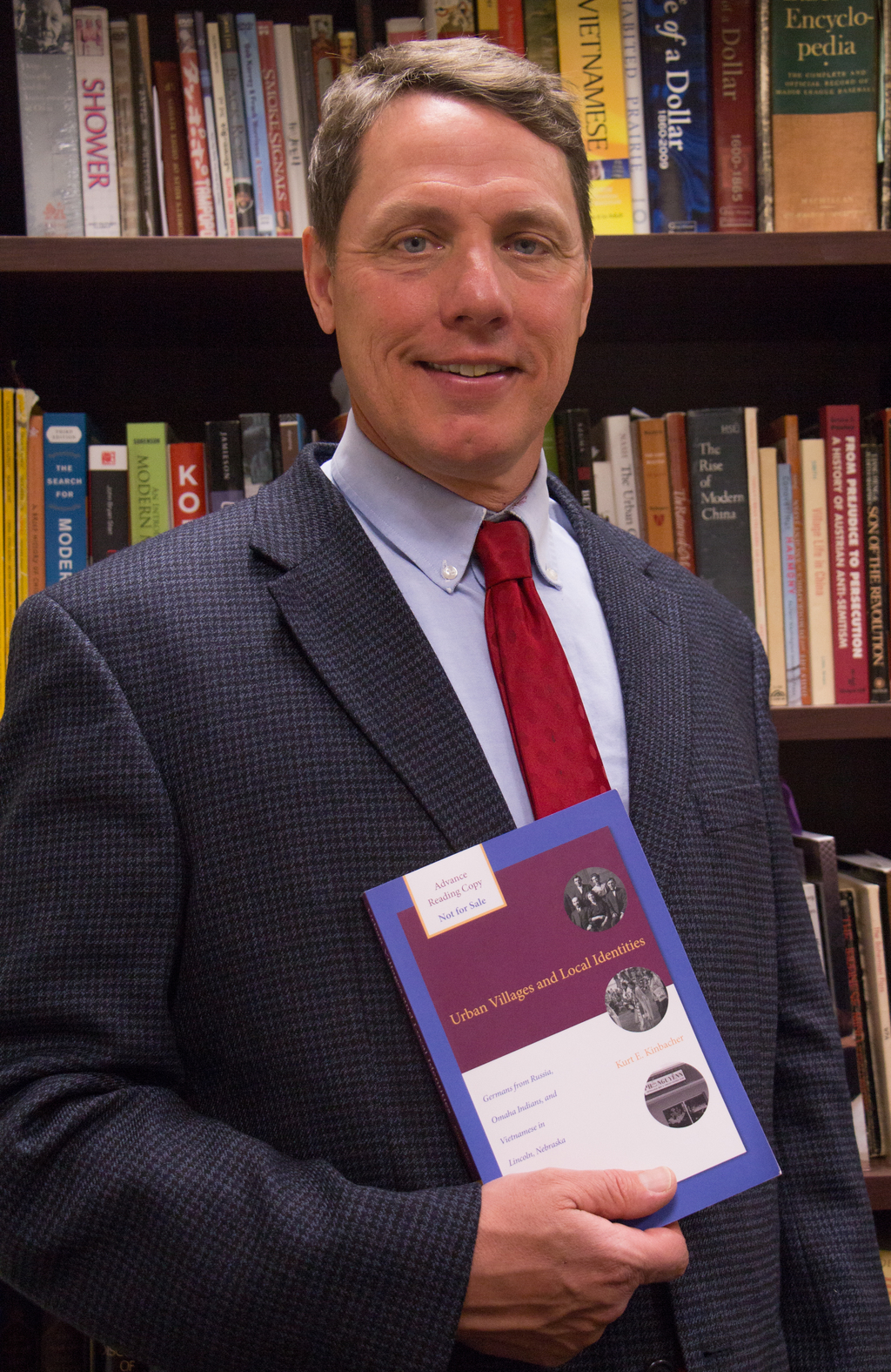Kinbacher's first book focuses on immigrants living on the Great Plains

CHADRON – Immigration is not a tranquil trail.
Arrival in a foreign country can be challenging, especially when it lacks a familiar language and aspects of culture and religion. However, settlement can also become a rewarding situation through cohesion and understanding, benefiting the immigrants and the nascent community.
A recently published book, “Urban Villages and Local Identities,” by Dr. Kurt E. Kinbacher, an assistant professor of history in the social and communication arts department at Chadron State College, is an extensive research account of immigrants living in Nebraska.
Kinbacher’s book focuses on Volga Germans, Omaha Indians, and Vietnamese, and how the different ethnic groups came to live in Lincoln. His narrative also details how those ethnic groups were able to thrive in and around the Lincoln-area, while developing unique cultural identities on the Great Plains.
Kinbacher, himself a native of Lincoln who earned his Ph.D. from the University of Nebraska, is thrilled “Urban Villages and Local Identities,” which took nearly a decade to be published and was mainly compiled as part of his dissertation defense in 2006, is finally reaching a wider audience.
“It’s a long time coming and I’m relieved it is done,” Kinbacher said. “When I started my Ph.D., I wanted to deal with identity on the Great Plains and it grew into this product. I grew up in Lincoln and so I wanted to write a comparative study on immigration and identities. The best course of action is to write locally and think globally. I followed that advice.”
While Lincoln is the capital of Nebraska, Kinbacher’s book makes it clear the city serves many needs of various ethnic groups. For instance, the Volga Germans, ethnic Germans who lived near the Volga River in the fertile southeastern region of Russia, traveled to Lincoln in the late 19th century to escape increasing pressure to conform to Russian culture.
The familiarity the Great Plains Grasslands offered didn’t hurt their choice either, Kinbacher said.
“Immigrants are driven by a good quality of life,” he said. “In Nebraska, you can come in, find a job and live well. You can provide for your family and launch your family into American prosperity.”
Kinbacher writes these three groups also benefited from vigorous urban villages, ethnic enclaves that offered immigrants living in geographic proximity to their cultural kinspeople a variety of important services. These urban villages gradually became communities built through neighborhood efforts. Once they became established, the populace began to benefit from education and obtained better jobs.
Lincoln also became a cultural center for Vietnamese. Beginning in 1975, due to the Vietnam War, every state was allocated refugees from Vietnam. Once Vietnamese people began to realize Lincoln was a hub of culture and tolerant of their faiths, the immigrants started to make the city their home in large numbers.
“They want to adapt. They don’t want to give up who they were but they want to be part of the community. So, because of that religion certainly plays a role,” Kinbacher said. “Churches represent villages to immigrants. Once the churches started growing, they needed sanctuaries. In Lincoln, Vietnamese used to congregate in houses and now they have enormous congregations and a parish.”
The Omaha Indians began their move to Lincoln during World War II as war-time workers. Kinbacher said as many as 65 percent of Indians live in urban settings.
The three ethnic groups Kinbacher writes about unfortunately weren’t always well received by Nebraskans, but the immigrants’ work ethic helped to bridge the divide.
“The Volga Germans built railroads and the State Capitol building, and the Omahas were active in a roofer’s union,” he said. “The Vietnamese did some serious labor, too.”
Kinbacher, who is currently working on a number of other articles and co-edited the “Reconfigurations of Native North America,” hopes “Urban Villages and Local Identities” is a useful text to scholars and students.
“This will be read primarily by people interested in immigration,” he said. “I’m proud of the work I have put into it.”
“Urban Villages and Local Identities,” is published by Texas Tech University Press. It is available to purchase in hardcover and e-book formats at major bookstores and online.
—Alex Helmbrecht, Director of College Relations
Category: Campus News
